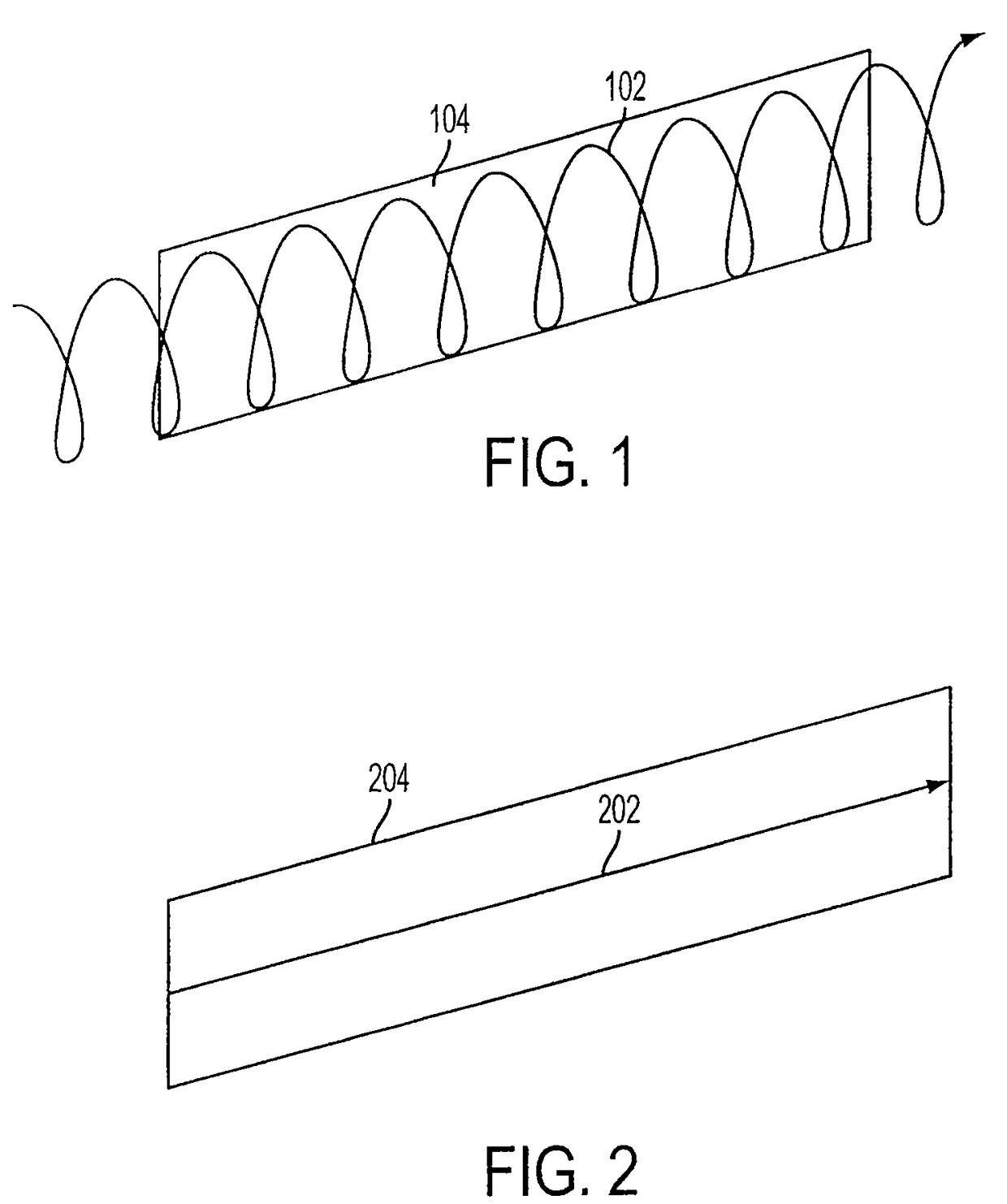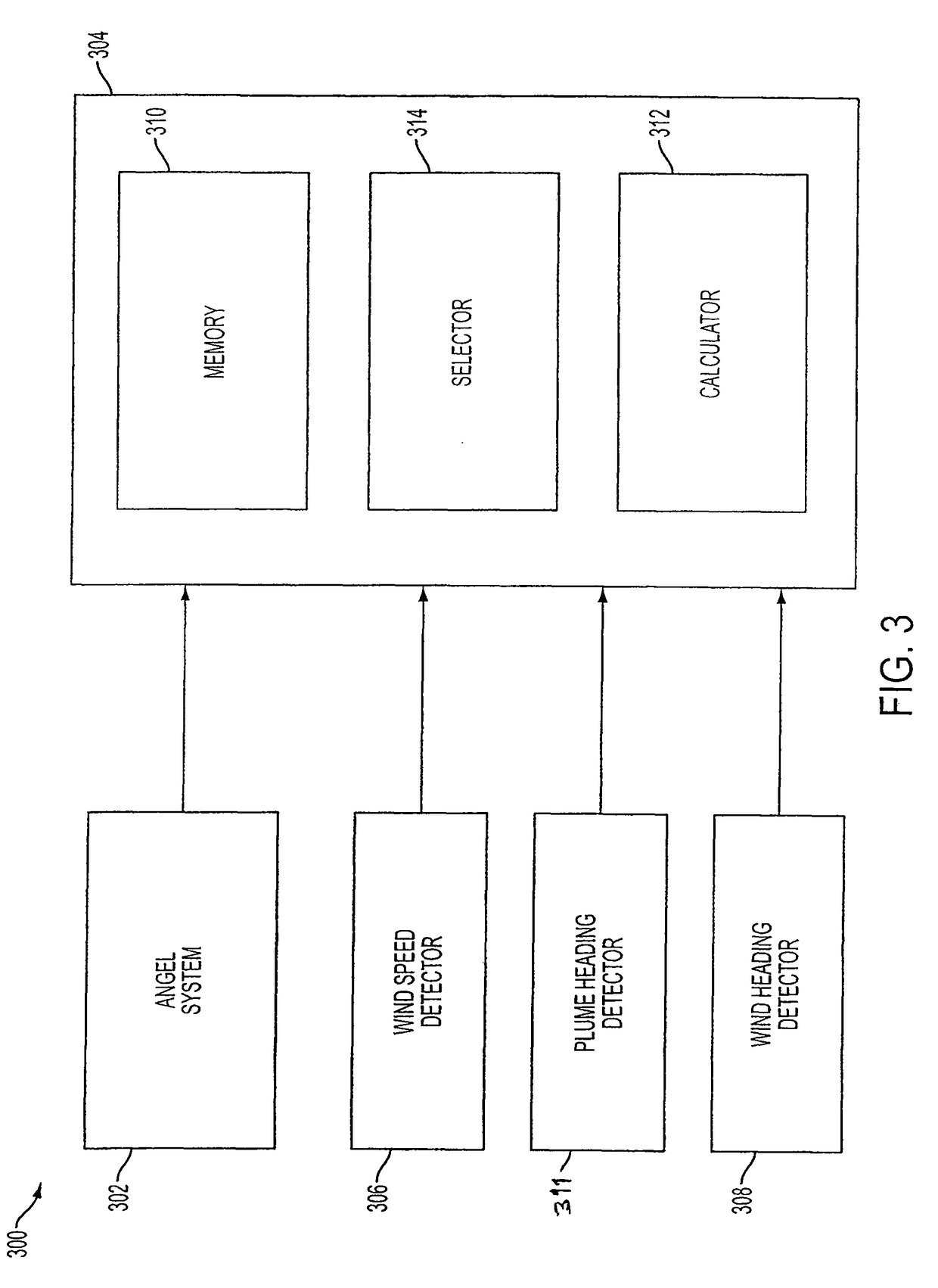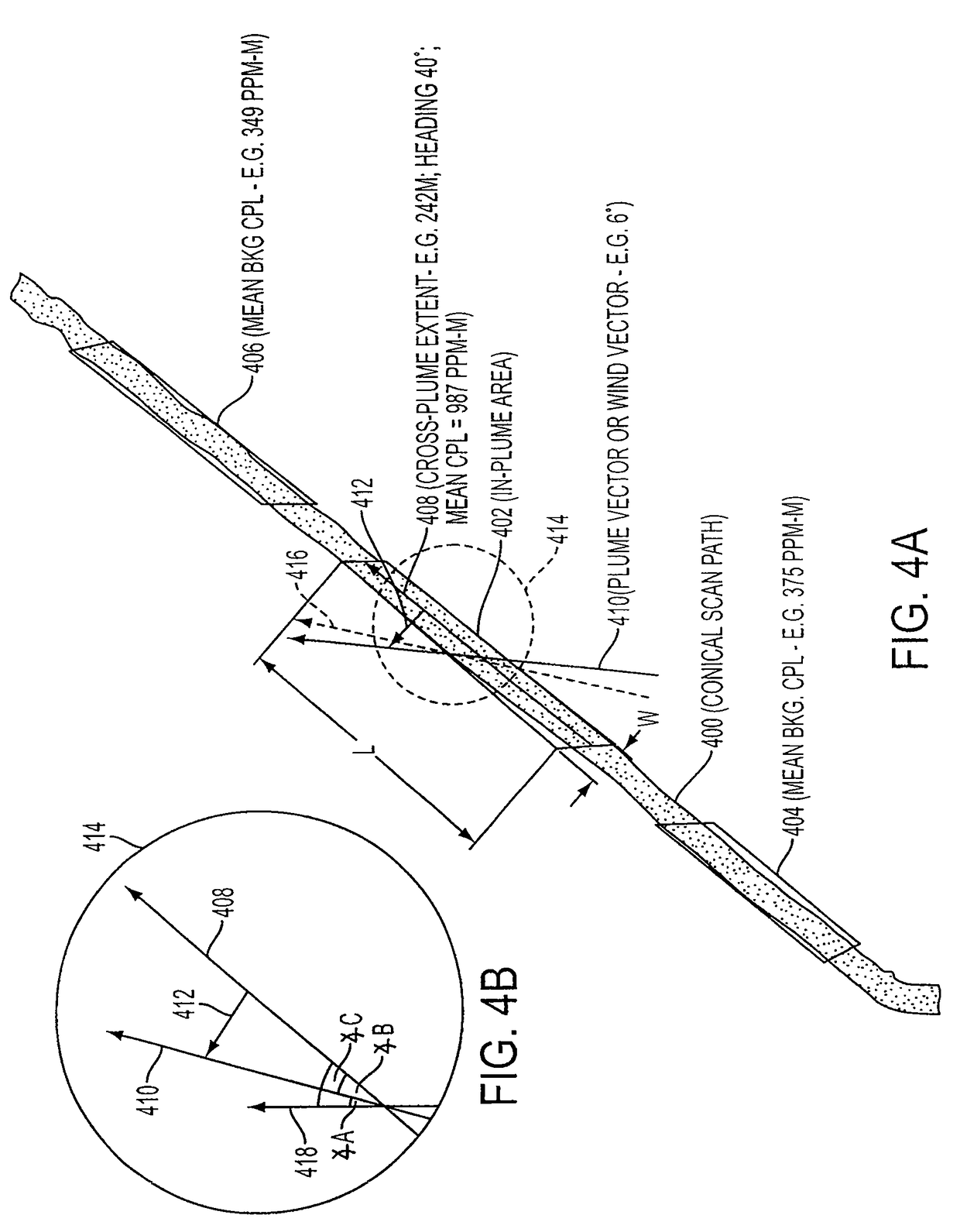Gas flux determination using airborne DIAL LIDAR and airborne wind measurement
a technology of airborne dial lidar and gas flux determination, which is applied in the direction of liquid/fluent solid measurement, using reradiation, instruments, etc., can solve the problems of difficult and expensive measurement of remote or hard-to-access sites, time-consuming and laborious measurements, and the effect of wasting tim
- Summary
- Abstract
- Description
- Claims
- Application Information
AI Technical Summary
Benefits of technology
Problems solved by technology
Method used
Image
Examples
Embodiment Construction
[0051]Referring first to FIG. 1, laser light 102 transmitted from the ANGEL system illuminates target area 104 using a conical scan (scanner-on mode). Alternatively, laser light 202 transmitted from the ANGEL system may illuminate target area 204 in a straight line (scanner-off mode), as shown in FIG. 2. Both modes may be used by the present invention.
[0052]With the exception of deploying lightweight wind sensor instrumentation, the ANGEL system does not need to enter a site to make measurements. The system may fly at high speeds (i.e. 120 mph) and measure large plumes in seconds, in effect providing a snapshot of the plume in time. As a result, measurements taken by the ANGEL system are more accurate than other systems which attempt to quantify a moving plume in several pieces.
[0053]For example, at a flight speed of 120 mph and a transmission rate of 1,000 pulses / second, the pulses are spaced about 2 inches apart providing a “curtain” of gas measurements to fully capture a cross se...
PUM
| Property | Measurement | Unit |
|---|---|---|
| horizontal distance | aaaaa | aaaaa |
| altitude | aaaaa | aaaaa |
| altitude | aaaaa | aaaaa |
Abstract
Description
Claims
Application Information
 Login to View More
Login to View More - R&D
- Intellectual Property
- Life Sciences
- Materials
- Tech Scout
- Unparalleled Data Quality
- Higher Quality Content
- 60% Fewer Hallucinations
Browse by: Latest US Patents, China's latest patents, Technical Efficacy Thesaurus, Application Domain, Technology Topic, Popular Technical Reports.
© 2025 PatSnap. All rights reserved.Legal|Privacy policy|Modern Slavery Act Transparency Statement|Sitemap|About US| Contact US: help@patsnap.com



